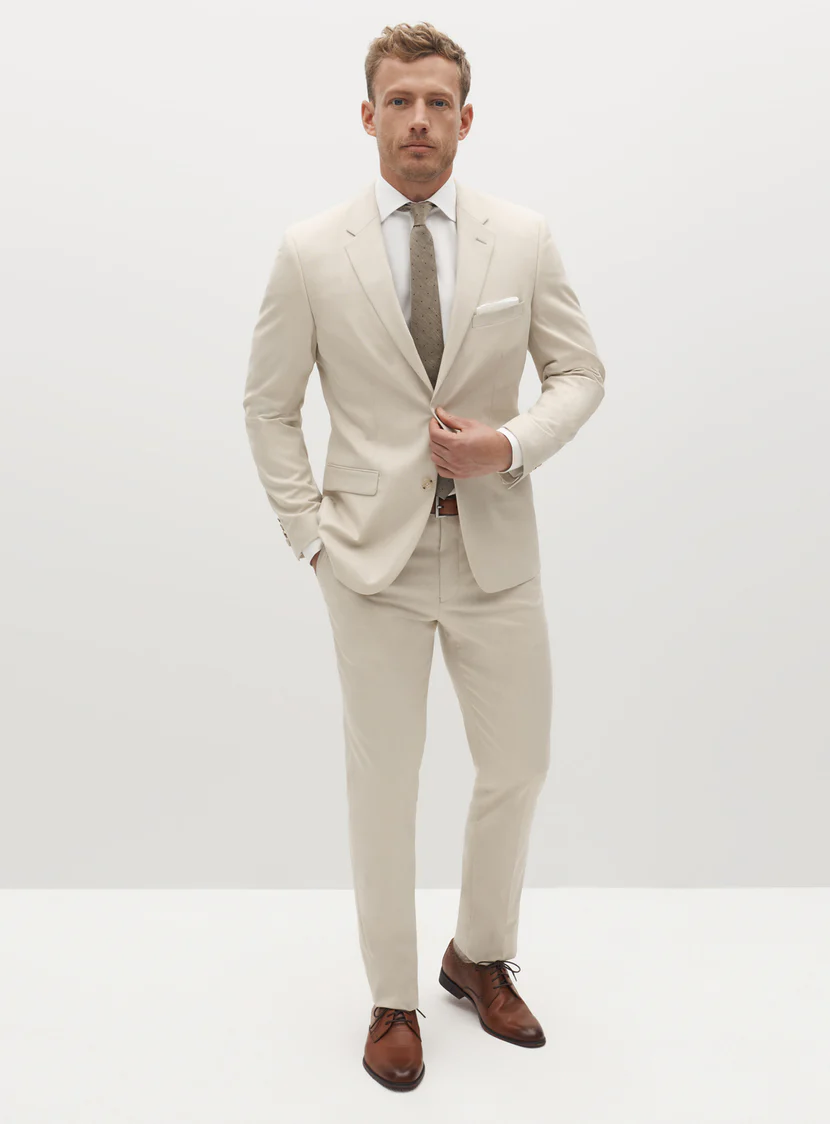I. Introduction
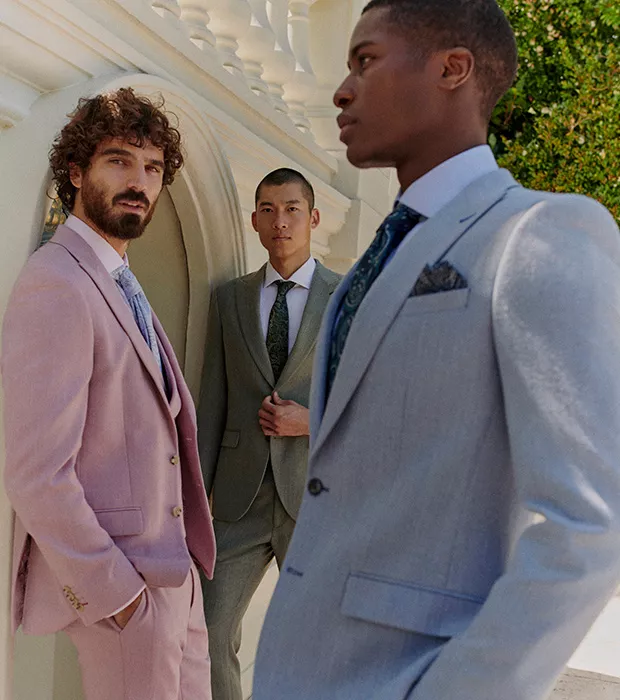
A. The Significance of Selecting the Right Wedding Suit for Men Choosing the right wedding suit is of utmost importance for men on their special day. A well-fitted and stylish suit not only enhances their appearance but also boosts their confidence. It is essential to understand the significance of selecting a suit that reflects personal style, suits the occasion, and makes a lasting impression.
B. Importance of Understanding Various Elements and Considerations Decoding wedding suits for men involves understanding various elements such as fit, style, fabric, and climate. Each of these factors plays a crucial role in finding the perfect suit that aligns with personal preferences and meets the requirements of the wedding.
C. Overview of the Article’s Focus on Decoding Wedding Suits for Men This article aims to provide comprehensive insights into decoding wedding suits for men. It will delve into determining the right fit through precise suit measurements and understanding classic suit styles. The article will also explore different suit fabric options and considerations for selecting the appropriate fabric based on the season, climate, and wedding venue.
II. Determining the Right Fit
A. Understanding Suit Measurements
- The Importance of Accurate Measurements Accurate suit measurements are essential to ensure a proper fit. Measurements for the chest, waist, sleeves, and inseam provide the foundation for a suit that enhances the groom’s physique and allows ease of movement.
- Key Areas for Measurement: Chest, Waist, Sleeves, and Inseam Measuring the chest for jacket size, waist for pant size, sleeves for proper arm length, and inseam for pant length are crucial components in determining the right fit. Precise measurements ensure that the suit drapes well and flatters the body shape.
B. Classic Suit Styles
- Single-Breasted vs. Double-Breasted Suits Single-breasted suits are the most common and versatile choice for weddings. They feature a single row of buttons down the front and a notched or peaked lapel. Double-breasted suits have two parallel rows of buttons and a wider range of lapel styles, adding a more formal touch to the groom’s attire.
- Choosing Between Peak, Notch, or Shawl Lapels Lapels play a significant role in defining the style and formality of a suit. Peak lapels are considered more formal and provide a sharp, pointed appearance. Notch lapels are the most traditional and versatile option, suitable for both formal and casual weddings. Shawl lapels, with their smooth and rounded appearance, offer a classic and elegant look.
III. Selecting the Fabric
A. Different Suit Fabric Options
- Wool Suits: Versatility and Comfort Wool suits are renowned for their versatility and comfort. They come in various weights and weaves, making them suitable for both warm and cool climates. Wool allows the skin to breathe and provides natural insulation, ensuring comfort throughout the day.
- Linen Suits: Lightweight and Breathable Linen suits are ideal for warm-weather weddings due to their lightweight and breathable nature. Linen fabric offers exceptional moisture-wicking properties, allowing the body to stay cool and fresh. However, linen suits may wrinkle more easily, requiring careful consideration.
- Velvet Suits: Luxurious and Statement-Making Velvet suits make a bold statement at weddings, exuding elegance and luxury. Their opulent texture and softness give the groom a distinctive and eye-catching look. Velvet suits are best suited for weddings with a formal or black-tie dress code, adding a touch of refinement and sophistication.
B. Considering the Season and Climate
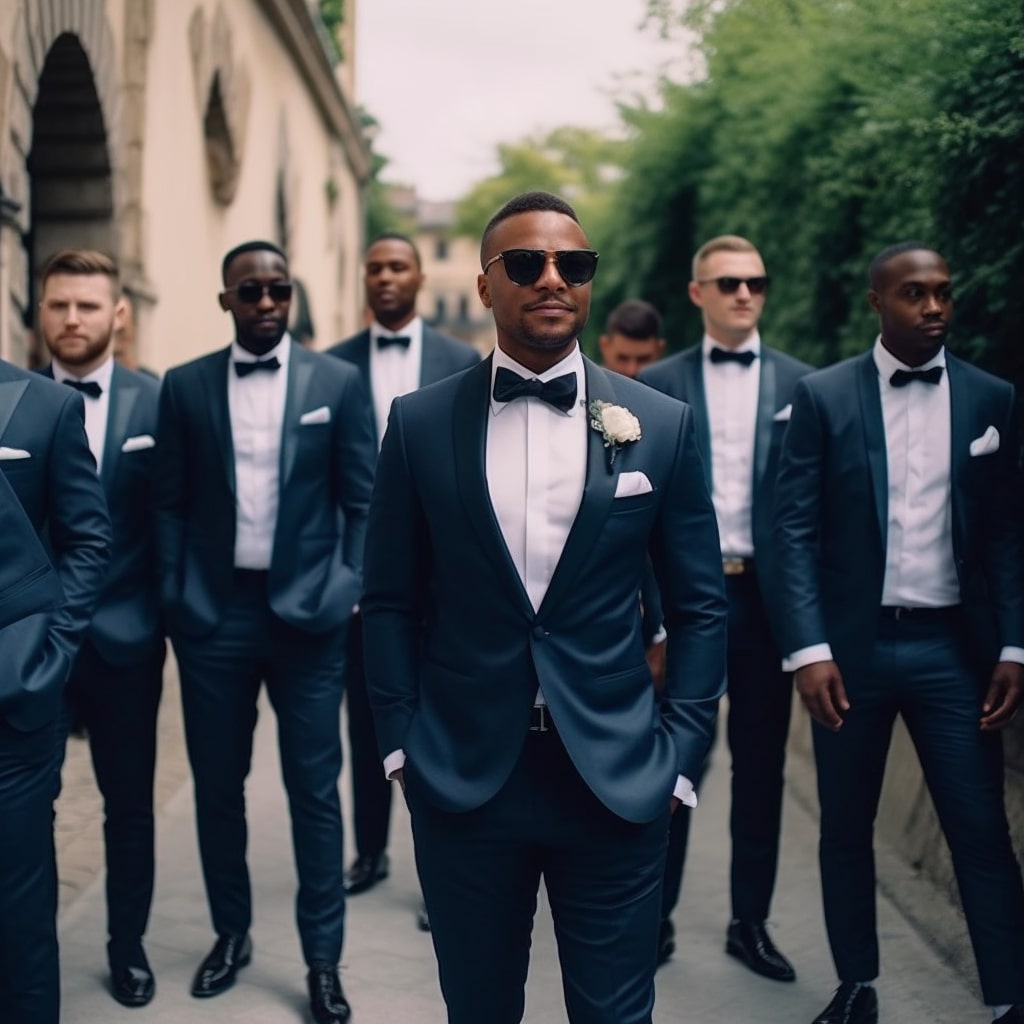
- Lightweight Fabrics for Warmer Seasons For weddings during spring or summer, lightweight fabrics such as cotton or linen blends are ideal. They offer breathability and keep the groom cool even in high temperatures.
- Heavier Fabrics for Colder Seasons For weddings in fall or winter, heavier fabrics like wool or tweed provide warmth and insulation. These fabrics are excellent choices to combat colder temperatures while maintaining a stylish appearance.
-
Adapting for Different Wedding Venues and Climates Consider the specific climate of the wedding venue. Outdoor weddings may require lighter fabrics to accommodate potential high temperatures, while indoor venues give more flexibility in selecting fabric weights.
IV. Decoding Suit Colors and Patterns
A. Classic Suit Colors
- Navy: Timeless and Versatile Navy suits are a staple in every man’s wardrobe. They are timeless, versatile, and appropriate for various occasions. Navy suits convey a sense of sophistication and can be easily dressed up or down. They work well for both formal and semi-formal weddings, offering a classic and sleek appearance.
- Gray: Sophisticated and Adaptable Gray suits are known for their sophisticated and adaptable nature. They come in a range of shades, from light gray to charcoal. Lighter shades of gray are often chosen for daytime weddings, while darker shades are more suitable for evening events. Gray suits provide a modern and clean look, allowing for flexibility in creating different styles.
- Black: Formal and Elegant Black suits are the epitome of formal and elegant dressing. They are perfect for black-tie weddings or events where a high level of formality is required. Black suits exude a sense of luxury and sophistication, lending an air of timelessness to the groom’s appearance. However, it’s important to ensure that the dress code and theme of the wedding align with the choice of a black suit.
B. Suit Patterns and Textures
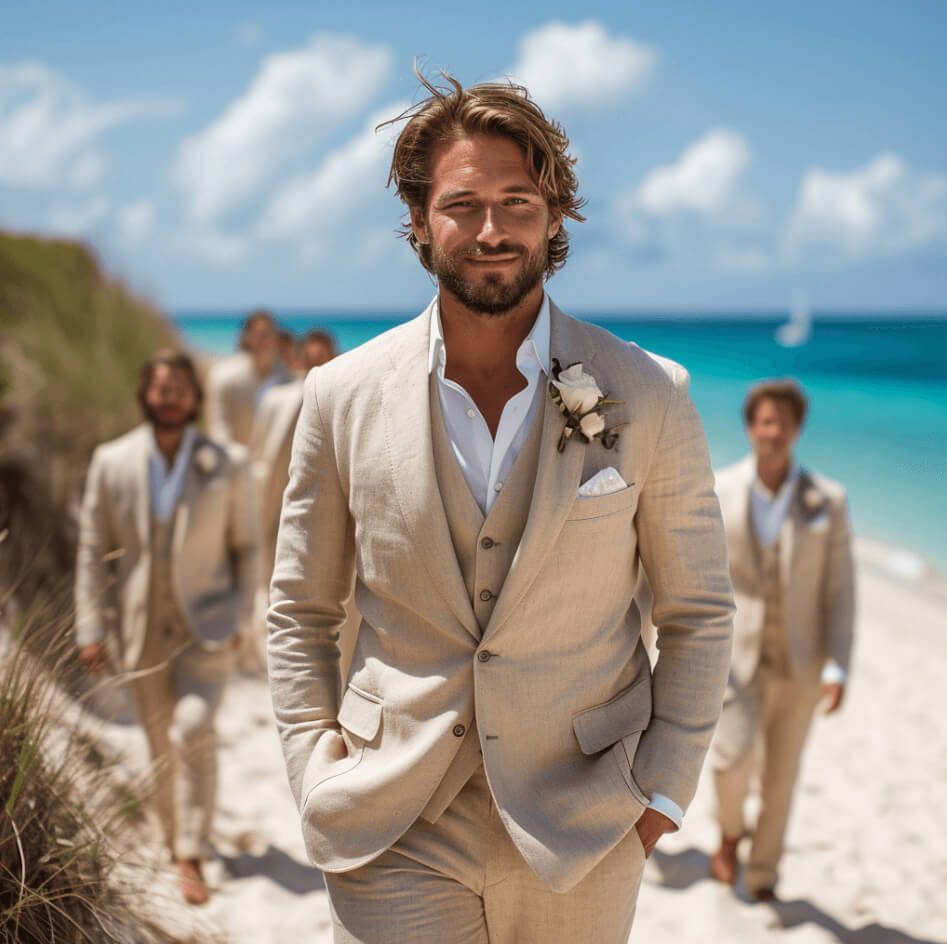
- Solid Suits: Timeless and Versatile Solid suits, in colors like navy, gray, or black, are timeless and versatile choices. They provide a clean and polished look without any distractions. Solid suits can be easily paired with various accessories and are suitable for most wedding themes and dress codes. They offer a classic and refined style that never goes out of fashion.
- Pinstripes and Windowpanes: Adding Subtle Patterns Pinstripes and windowpane patterns are excellent options for subtly incorporating patterns into wedding suits. Pinstripes are thin vertical lines that give a nod to traditional menswear and create a slimming effect. Windowpane patterns feature larger square-like patterns, offering a bolder but still refined look. These patterns add visual interest to the suit without overwhelming the overall aesthetic.
- Checks and Plaids: Bolder Choices for a Unique Look For those seeking a distinct and eye-catching look, checks and plaids are excellent pattern options for wedding suits. Checks feature small, equal-sized squares, while plaids are larger and often unevenly spaced. Both patterns add a touch of personality and individuality to the suit. It’s important to balance the overall look by keeping other elements minimal and complementary.
V. Accessorizing the Wedding Suit
A. Dress Shirts and Ties
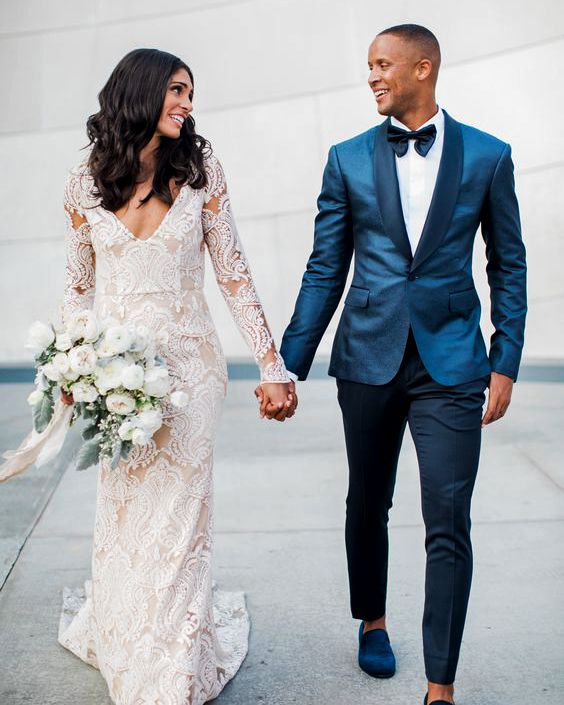
- Complementary Colors and Patterns Choosing a dress shirt and tie that complement the suit color and pattern is essential for a cohesive and polished look. Consider the color wheel and opt for colors that harmonize with the suit. For solid suits, patterns in the tie or shirt can add visual interest, while for patterned suits, solid or subtly patterned accessories help maintain balance.
- Considering the Formality and Tone of the Wedding The formality and tone of the wedding should also guide the choice of dress shirt and tie. For formal weddings, opt for crisp white or light-colored shirts paired with a vibrant, solid-colored tie. For more casual events, lighter shades or softer patterns in both the shirt and tie can lend a relaxed yet put-together vibe.
B. Matching the Accessories
- Choosing the Right Shoes The choice of shoes should complement the suit, taking into consideration color, style, and formality. For navy or gray suits, traditional black or brown Oxford dress shoes are safe choices. Black suits generally pair well with black shoes, but dark brown or burgundy can also make for a stylish and unique combination.
- Adding Complementary Pocket Squares, Belts, and Cufflinks Accessories like pocket squares, belts, and cufflinks can elevate the overall look of the wedding suit. Pocket squares in coordinating or complementary colors can add a pop of color and sophistication. Belts should match the color or finish of the shoes, while cufflinks should be simple and elegant.
In conclusion, decoding suit colors and patterns is crucial in creating the perfect wedding suit ensemble. Classic suit colors like navy, gray, and black offer timeless elegance, while patterns like pinstripes, windowpanes, checks, and plaids allow for expression and individuality. When accessorizing, choose dress shirts and ties that are complementary and consider the formality and tone of the wedding. Ensure shoes and other accessories align with the suit and create a cohesive and stylish look. By carefully selecting and matching these elements, the wedding suit will reflect the groom’s personal style and make a lasting impression on the big day.

